Siege mortar M-Gerät / Dicke Bertha (Germany)
The development of siege weapons was carried out by the Krupp concern, which by the beginning of the 20th century had become one of the world leaders in artillery. In the first decade of the century, he developed several versions of large-caliber guns, the last of which was the so-called. 42 cm Gamma-Gerät (“Gamma Device”). According to the test results and the development this system was decided to be adopted. In 1913-18, the manufacturer built ten such howitzers / mortars of the 420 caliber mm and handed them over to the customer. Subsequently, such weapons were actively used during the First World War.
In 1912-13, the German military department attempted to determine the prospects of the developed weapons of special power. The product "Gamma" was of great interest to the army, but it had serious drawbacks. The gun was distinguished by its large mass and extremely strong recoil, because of which it had to be installed on a specially prepared concrete slab of the appropriate size. The deployment of such an artillery system lasted more than a week, and most of the time was spent on the hardening of concrete. As a result, the mobility of the instrument, to put it mildly, left much to be desired.
The military ordered the mass production of 420-mm cannons, which required the construction of a foundation, but at the same time they demanded a more mobile system with similar combat qualities. In 1912, an official order appeared to create such an artillery complex. To develop a new project was to be recognized by the industry leader - Krupp concern. Project leaders have been appointed Max Dreger and Fritz Rauzenberg.
Considering the importance of the work and the need to keep the project's goal confidential, the development company assigned the project the symbol M-Gerät (“Device“ M ”). The name M-Gerät 14 was also used, reflecting the year when the design was completed. In addition, over time, the designation Kurze Marinekanone 14 ("1914 short sea cannon") appeared. These designations were official and used in the documents.
From the point of view of the role on the battlefields, the prospective system was to become a siege weapon. At the same time, some characteristics make it possible to unambiguously clarify such a classification. The project has proposed the use of a barrel length 12 calibers. Such a length of the trunk corresponds to the generally accepted definition of mortars. Thus, the army in the future was to receive super-heavy siege mortars.
A little later, the new project received the unofficial nickname Dicke Bertha (“Fat Bert” or “Big Bert”). According to the popular version, the gun was nicknamed in honor of Bertha Krupp, who at the time was one of the leaders of the concern. According to another, less known version, the wits meant the writer and activist of the pacifist movement Bertha von Suttner. However, unequivocal evidence in favor of a particular version is missing. It is possible that a new weapon was called Berta without any connection with a specific person, simply using one of the common female names. Anyway, the promising weapon became widely known precisely under the name Dicke Bertha, while official designations were more often used in documents than in live speech.
In accordance with the requirements of the customer, the new weapon should have resembled the existing sample. However, for several reasons, it had to be developed from scratch, albeit using some existing ideas and solutions. The outcome of this approach was the appearance of an 420-mm siege gun on the towed wheeled carriage. Large caliber, the need to ensure high structural strength and the requirements for special equipment led to the formation of an unusual appearance of the gun. Externally, “Fat Bert” was supposed to resemble other existing towed guns of smaller calibers. At the same time, there were major differences in the layout and other aspects.
For the special power tools had to develop a towed wheeled carriage with the appropriate characteristics. The main element of the mast was the lower machine, which was responsible for placing the outstanding impulse of impact on the ground on the position and transmission. The main part of the lower machine was a large T-shaped unit that had fastenings for mounting all other equipment. On its front part mounts were provided for mounting the wheels and a supporting device for a swivel upper machine. Also, there were two jacks for additional fixing tools. The back of the main unit acted as a bed with a coulter, for which it had a curved shape and an increased width. Bottom on the rear coulter of the bed provided for a plane entering the ground and securing the carriage in place. Above there was a toothed rack, necessary for the implementation of the horizontal pickup.
The upper machine tool carriage performed in the form of an elongated plate of large elongation. In its front part means were provided for installation on the lower machine, as well as racks with mounts for the rocking artillery unit. The back of the plate passed over the bed of the lower machine and reached the rack rail. To interact with the last on the plate there was a corresponding mechanism. The convenience of the calculation was proposed to provide with a large platform above the rear frame. When the angle of horizontal guidance was changed, the platform moved with the instrument. Provided a set of stairs to lift the calculation into place. The upper machine had attachments for mounting a curved armor shield.
The carriage received a wheel drive of the original design. Two large metal wheels provided for the installation of swinging base plates, which made it possible to increase the size of the support surface. When working on an unprepared site, it was necessary to substitute special large-sized box supports for the wheels. They were intended to accommodate the main wheels and install additional jacks.
Other requirements for mobility have led to the need to use a new design of the trunk and its associated units. The gun received a rifled barrel with a caliber of 420 mm and a length of 12 calibers (more than 5 m). Due to the high loads it was necessary to use a barrel of complex shape. Its muzzle and front half had the shape of a truncated cone. The breech and part of the pipe next to it was made in the form of a cylinder with walls of relatively large thickness. At this section of the barrel mounts were provided to connect with the cradle and recoil devices.
The gun received the traditional German artillery sliding wedge bolt moving in the horizontal plane. The shutter was equipped with a trigger mechanism with a remote control. Due to the high power of the propellant charge and the corresponding noise, the shot was allowed only from a safe distance using a special remote control.
The cradle of the implement was made in the form of a part with a cylindrical internal channel and fastenings for two pairs of cylinders on the upper and lower surfaces. An anti-recoil device of a hydraulic type with two recoil brakes and two knurls was placed above and below the barrel. The cradle with wheel chocks could swing on the pins mounted on the respective supports of the upper machine.
Gun Dicke Bertha received guidance mechanisms with manual drives, driven by several calculation numbers. Horizontal targeting within the sector width 20 ° was carried out using the interaction of the toothed rack and the mechanism of the upper machine. The latter at the same time rotated on its axis, changing its position relative to the lower machine. The gear train in the vertical guidance mechanism allowed the barrel to be raised at angles from + 40 ° to + 75 °.
For use with the new 420-mm mortar, it was decided to develop new projectiles. Later it was established that such ammunition, subject to certain rules, can also be used with a 42 cm Gamma Mörser howitzer. "Big Bertha" could shoot a dangerous or concrete-piercing projectile with a mass of 810 kg. Already after the beginning of the First World War, a high-explosive 400-kg was created. Throwing ammunition was provided by a variable charge placed in a metal sleeve. High-explosive shells of a large mass could leave behind large craters in the ground, as well as cause serious damage to concrete structures. The fragments of the shell-shattered hull scattered over a distance of 1,5-2 km, representing a great danger to manpower.
A large mass of projectile and shells made the designers equip the gun with the appropriate equipment. On the left side of the upper machine, a light crane with a hand winch was mounted, with which the calculation could lift ammunition to the discharging line. After training, the gunners could reload the gun in 8 minutes. At the same time, in practice, it took more time to execute the shot, because before shooting the calculation had to be removed to a safe distance in order to avoid injury to the hearing organs.
The prospective siege mortar in a combat position had a length of the order of 10-12 m, depending on the position of the trunk. The combat weight was 42,6 t. When using the maximum propellant charge, the initial velocity of the heavy 810-kg projectile reached 330-335 m / s. For light 400-kg ammunition, this parameter was 500 m / s. More powerful projectile flew at a distance of 9,3 km, light - at 12,25 km.
The large size and weight of the gun, despite the best efforts of the authors of the project, imposed noticeable restrictions on mobility. For this reason, the wheeled carriage was proposed to be used only for transporting guns over short distances. Other transfer should be carried out only after dismantling. The construction of “Fat Berta” provided for dismantling a single complex into five separate units, transported separately on their own trailers. For several hours, the calculation could collect a weapon at the firing position or, conversely, prepare it for departure.
The assembly of the gun began with the unloading of the two main mast aggregates followed by their connection. At the same time, the transport axle was removed from the lower machine, instead of which the coulter was mounted. Then it was proposed to install a cradle on the upper machine, after which the barrel was loaded into it. The assembly was completed with the installation of a platform, a shield and other devices. When deployed to the positions of the wheels, the tools should have been mounted on special metal box supports. The latter had a protruding front plate, which rested the front jacks of the gun carriage. The rear shoe opener plunged into the ground.
The order for the construction of the first mortar M-Gerät was received in June 1912 of the year. In December next year, the concern-developer presented this product for testing. Almost a year before, in February 1913, the army ordered the construction of a second gun of a similar type. “Big Bertha” №2 was made by the beginning of the summer 1914 of the year. By this time, the first prototype successfully passed part of the tests and was even shown to the top leadership of the country. The project received approval, with the result that the guns could count on mass production and operation in the army.
By the beginning of World War I, Germany had two Dicke Bertha guns in stock. In addition, two additional swing artillery units were made in the form of a barrel and a cradle. In connection with the start of the fighting, both finished guns were handed over to the army and included in the 3 battery of the short naval gun Kurze Marinekanonen Batterie 3 or KMK 3. Immediately after the formation of the unit was sent to Belgium, where German troops tried to take several fortresses. The arrival of two 420-mm mortars and their brief combat work made it possible to put an end to several battles. Heavy shells caused serious damage to the fortifications, forcing the enemy to stop resistance.
After the outbreak of World War I, the German command ordered the new M-Gerät guns. Until the end of the conflict, the industry managed to build ten high-grade mortars, as well as produce 18-20 sets of interchangeable barrels and cradles. Series guns differed from the experienced series of innovations. So, instead of the spoked wheels were proposed products with solid metal discs. The shutter was modified, and in front of the shield there was a small additional platform for the placement of gunners. The rest of the serial weapons was similar to the experienced. Serial guns were reduced to five new batteries.
After Belgium, mortars were sent to France. Subsequently, they were used on all European fronts during various operations. The main goals of mortars have always been to strengthen the enemy. Over time, as the development of the resource and the problems with ammunition, the gunners began to suffer losses. At least two guns "Big Bert" were destroyed when fired due to the explosion of the projectile inside the barrel. After these incidents, the calculations of the remaining guns received new orders relating to safety regulations when firing.
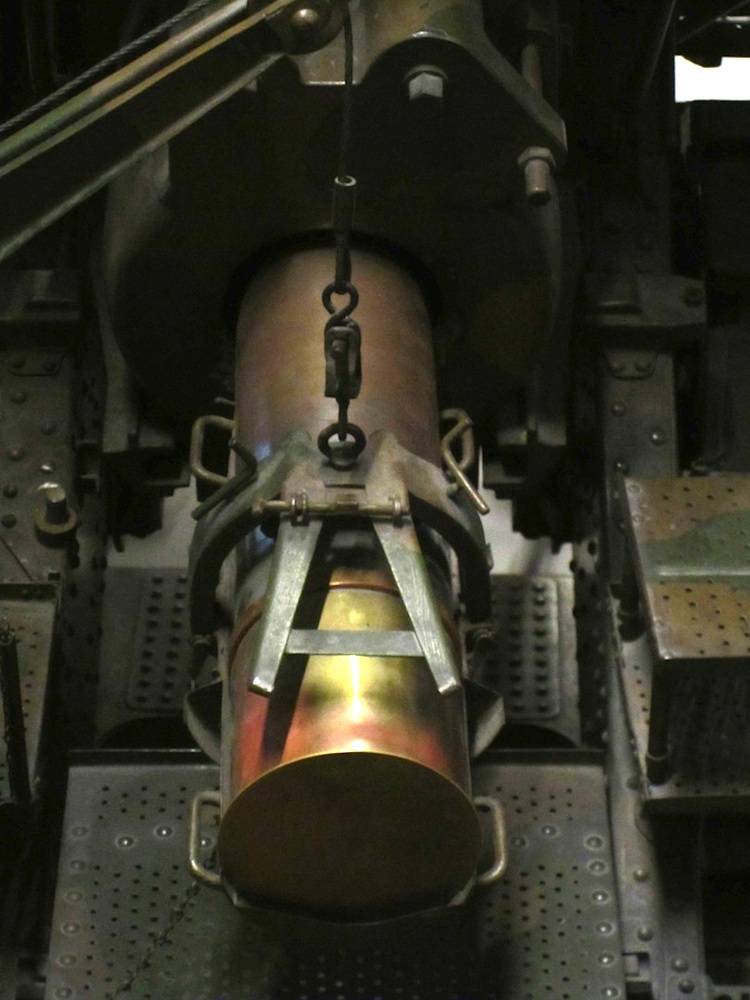
Layout gun "Big Bertha": breech and means for loading projectiles. Photo Landships.info
A large mass of concrete shells in combination with the typed in the fall rate gave very good results. In some cases, the 810-kg projectile could pierce up to 10-12 concrete. Particularly successful was the use of mortars in Belgium. This country had outdated concrete forts that did not have metal reinforcement. Such fortifications were easily destroyed by intensive shelling. A remarkable shooting result was obtained when attacking the Belgian fort Lonsen. The shell struck the overlap of one of the fortifications and fell into an ammunition depot. Immediately killed 350 defenders of the fortress. Soon the fort gave up.
France, unlike Belgium, managed to build a sufficient number of fortifications of more durable reinforced concrete, due to which the military work of the calculations of M-Gerät became much more complicated. However, in such cases, the effectiveness of using 420-mm projectiles was quite high. Long shelling allowed the enemy to inflict considerable damage on the fortress and to facilitate its further capture.
In 1916, four batteries with eight mortars were immediately transferred to the Verdun area to deal with the latest French fortifications. The fortresses built using modern technology were no longer so easily hit by heavy shells. It was not possible to crack the thick solid floors, which led to corresponding consequences on the scale of the entire operation. During the Verdun battle, German gunners first encountered a serious problem in the form of an enemy aviation. Enemy pilots identified firing positions and launched counter-battery fire on them. German soldiers had to urgently master the disguise of large guns.
Dicke Bertha siege mortars were actively used by German troops on all fronts, but the number of such weapons among the troops was constantly decreasing. As exploitation proceeded, the guns failed for one reason or another, primarily because of a projectile rupture in the barrel. In addition, there is information about the destruction of several guns response fire of French artillery. Due to accidents and retaliatory strikes by the enemy, at the time of the end of hostilities, the German army had only two Berthas.
Shortly after the end of the fighting, in November 1918 of the year, the winning countries received the two remaining M-Gerät super heavy mortars. These products were handed over to American experts, who soon took them to the Aberdeen Proving Ground for extensive tests. American gunners showed great interest in the unique 420-mm gun, but quickly became disillusioned with it. With all its outstanding fighting qualities, the German gun had unacceptably low mobility. Even the presence of a wheel carriage didn’t allow him to be quickly transferred to a new position.
After the test was completed, the guns were sent to storage. Later they were restored and introduced into the museum exposition. Two "Big Bertha" remained museum exhibits until the forties. In 1942, one weapon was dismantled and disassembled, and in the early fifties the same fate befell the second. On this all instruments built in Germany ceased to exist.
The super-heavy siege mortar M-Gerät / Dicke Bertha was a specialized weapon model designed to solve a specific combat mission. During the First World War, such systems showed themselves well in the fight against the forts of outdated designs. Newer fortifications with different defenses were no longer a simple target even for 420-mm guns. Until the end of the war, mortars of special power with a certain efficiency were used in various operations, but the defeat of Germany and the events that followed put an end to stories interesting project. Both surviving mortars could now only count on preserving as museum pieces.
On the materials of the sites:
http://landships.info/
http://kaisersbunker.com/
http://greatwar.co.uk/
http://panzer-archiv.de/
http://whq-forum.de/
http://landships.activeboard.com/
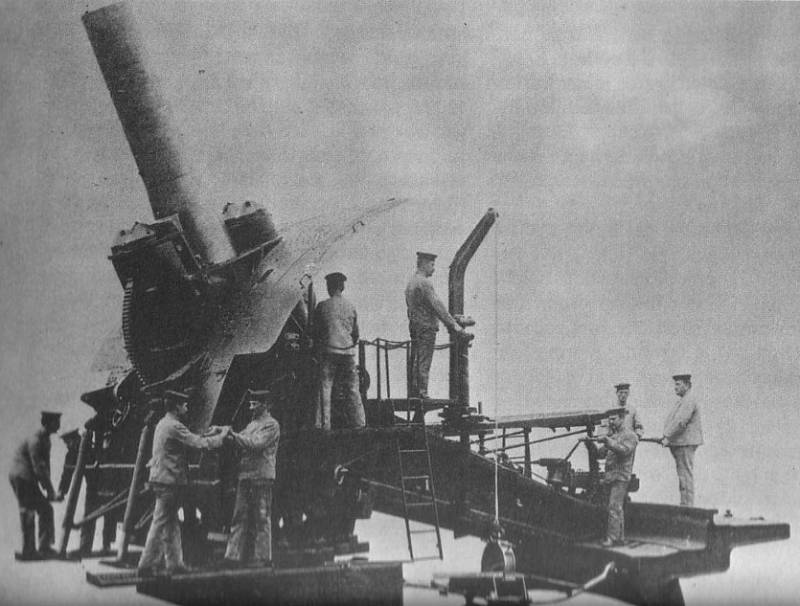
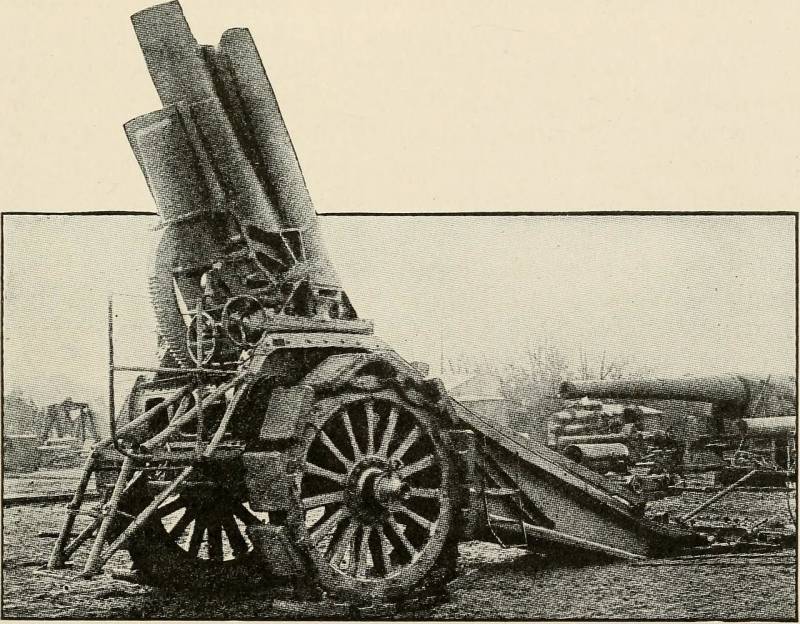
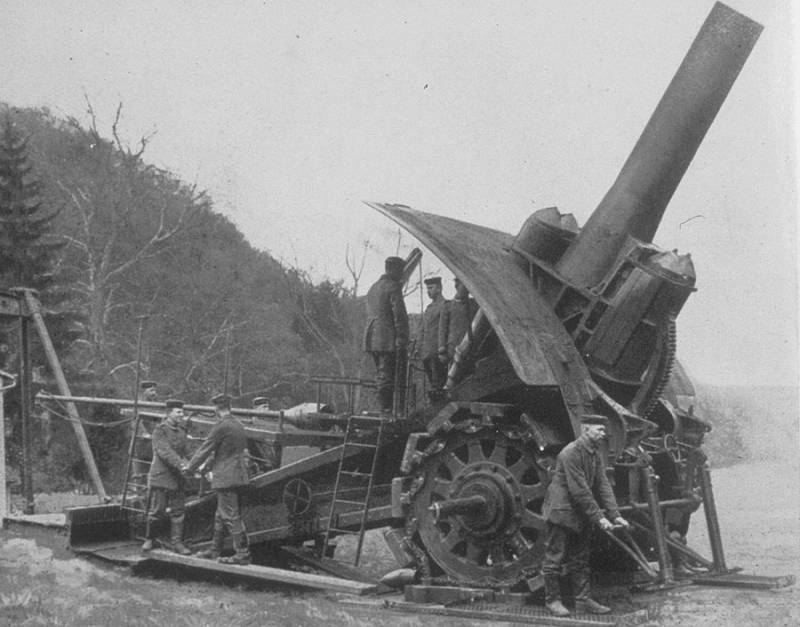
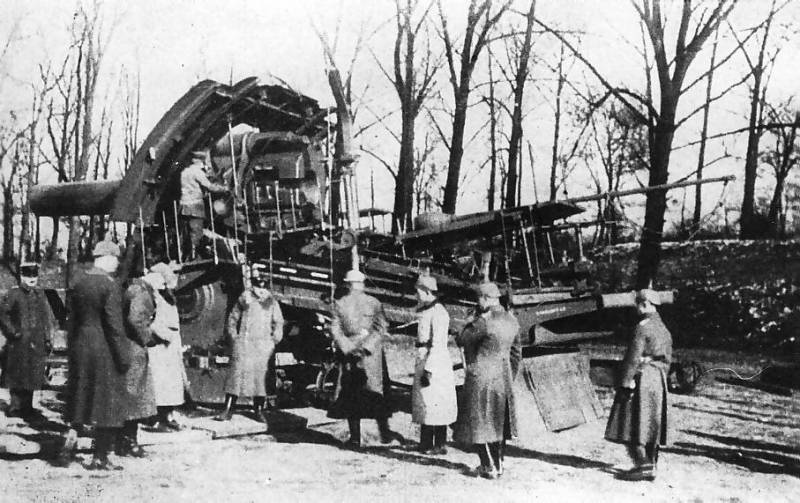
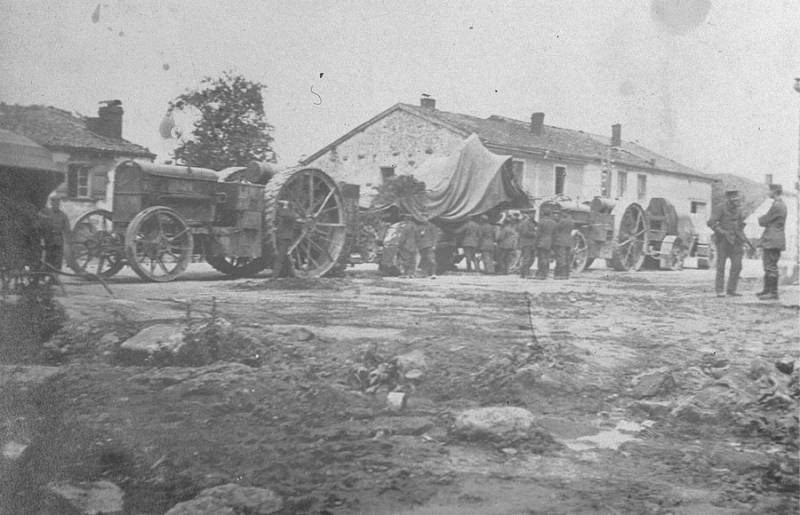
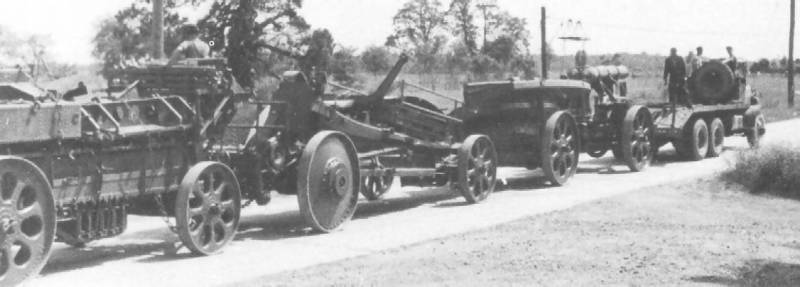
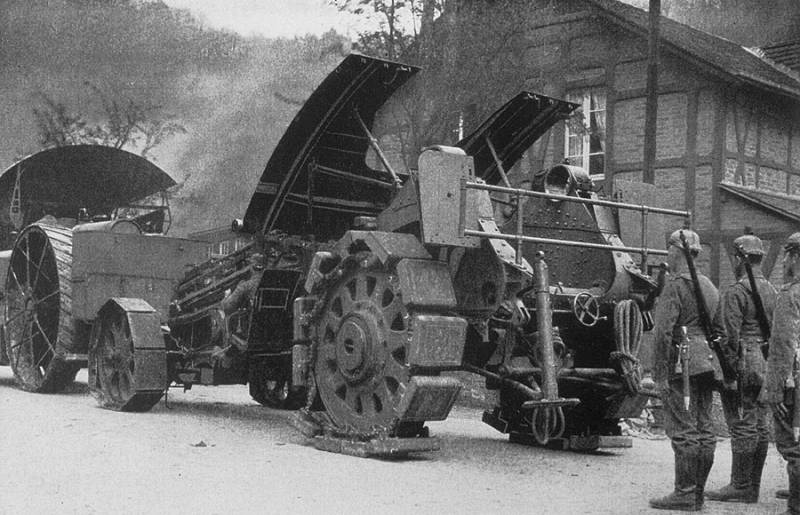
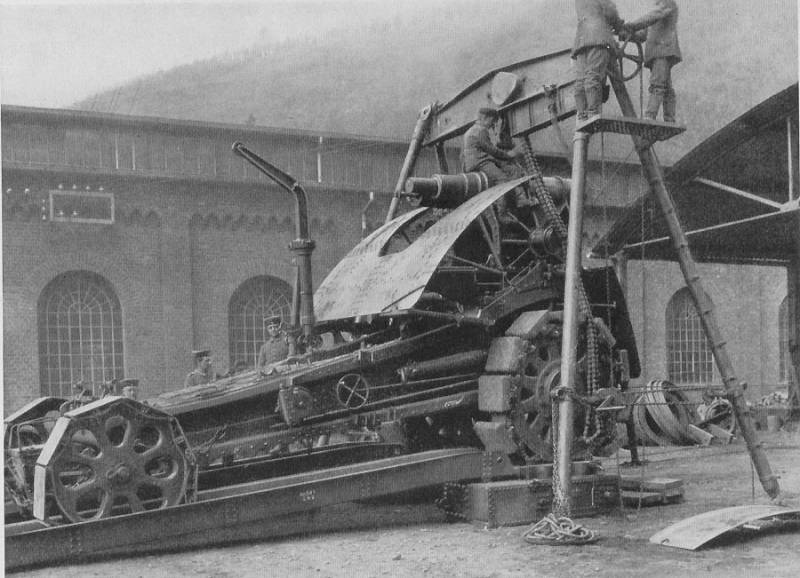
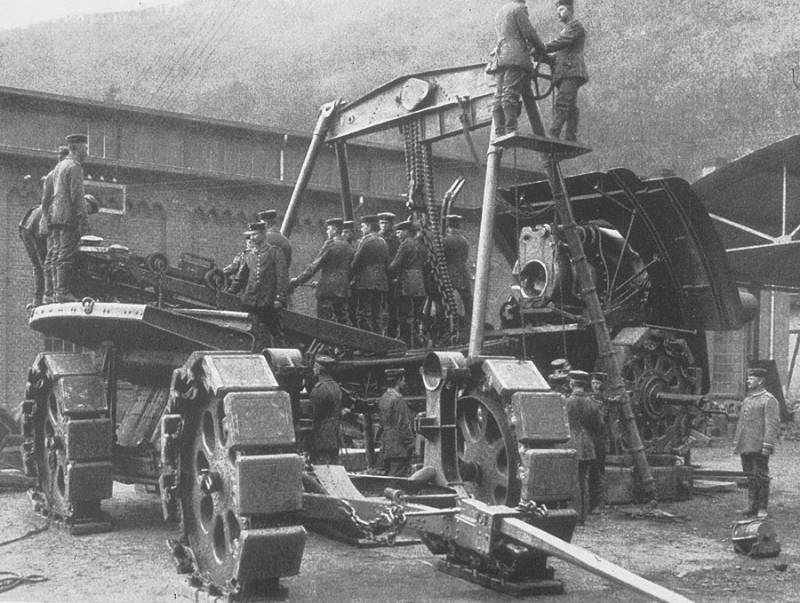
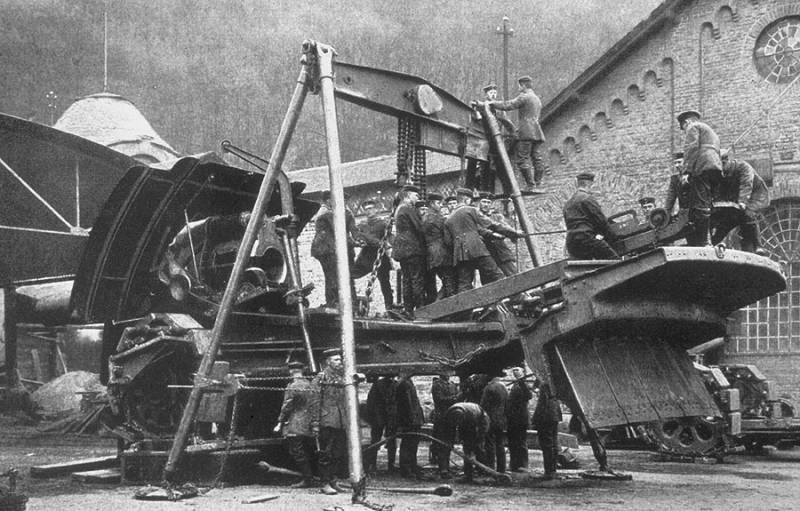
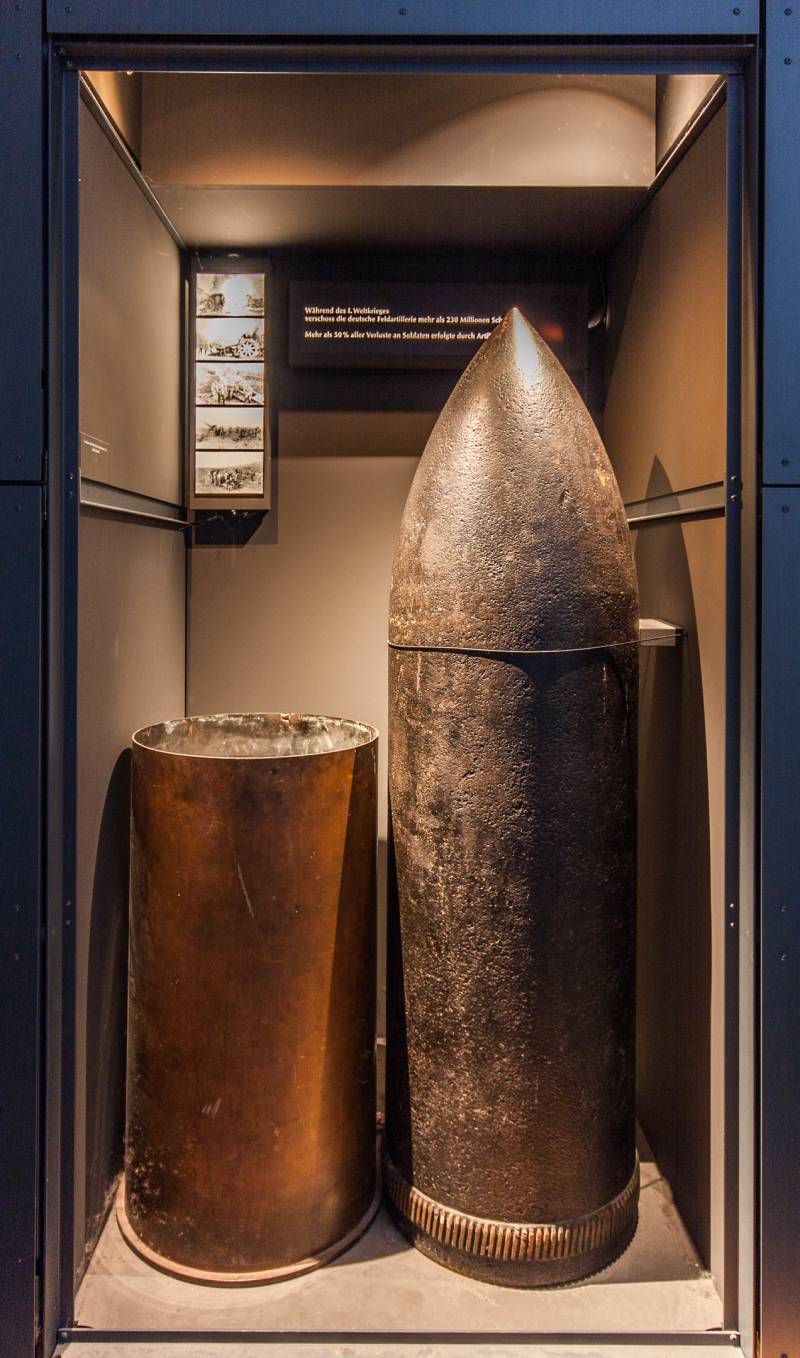
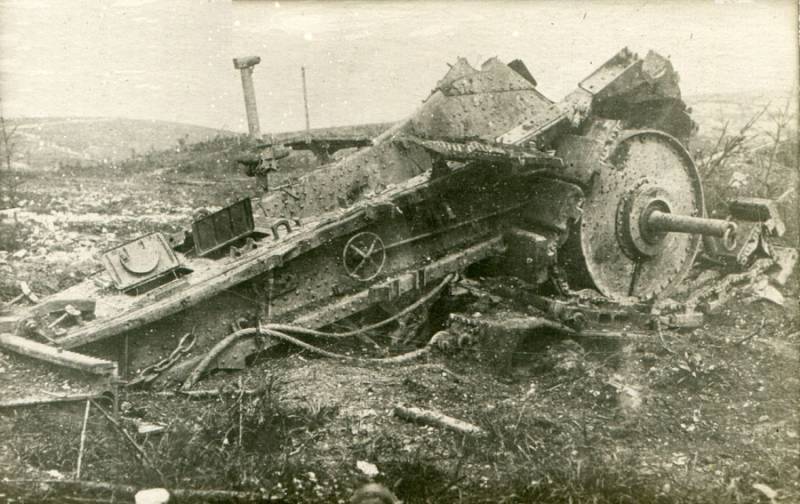
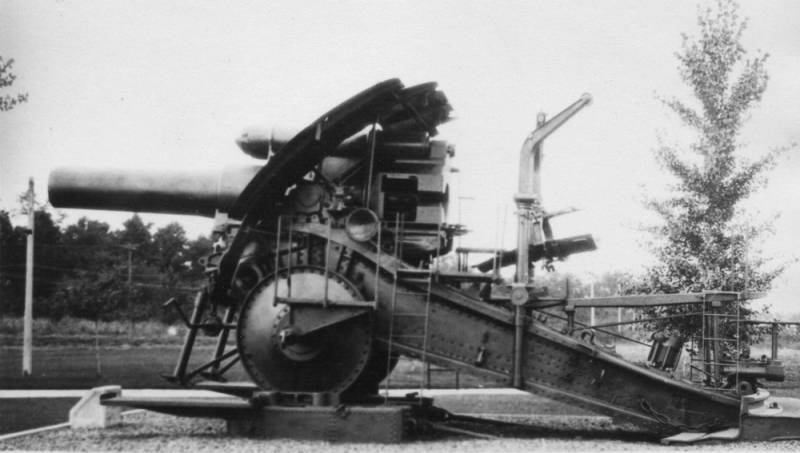
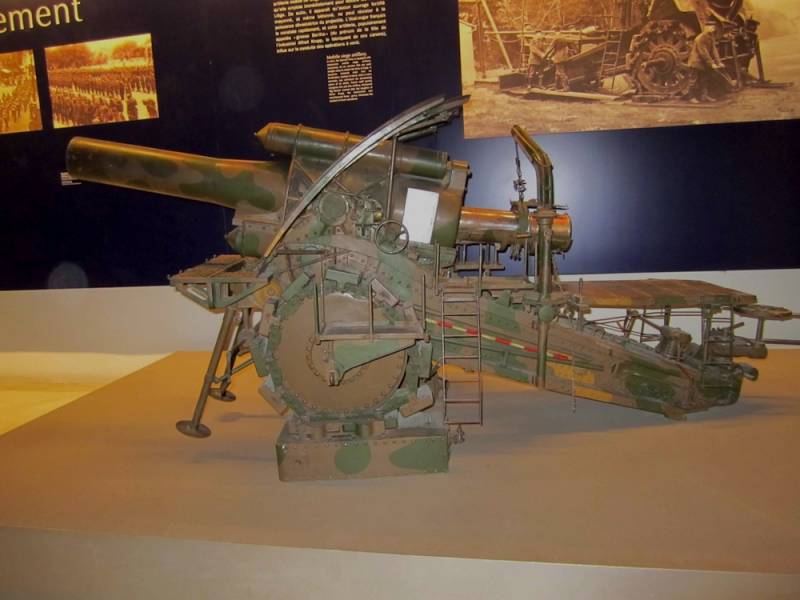
Information